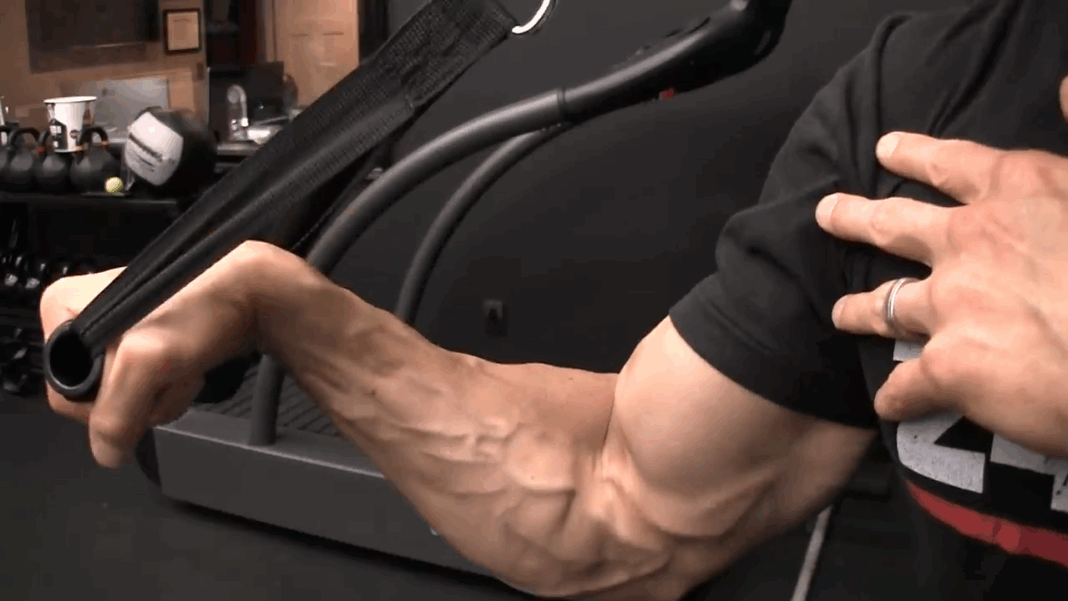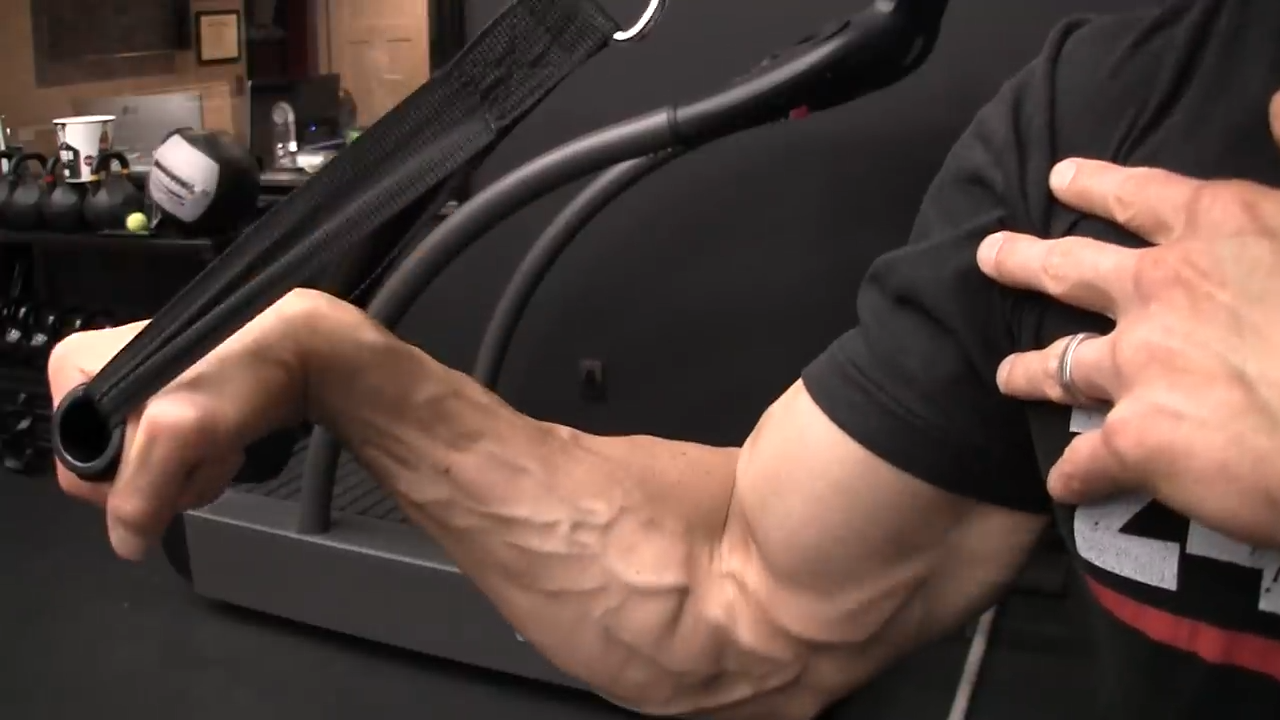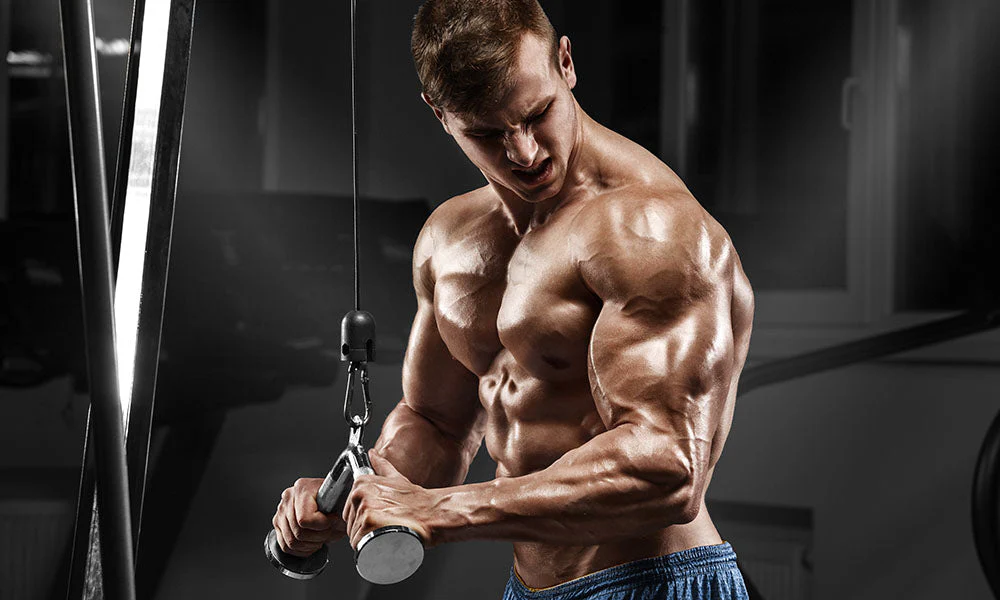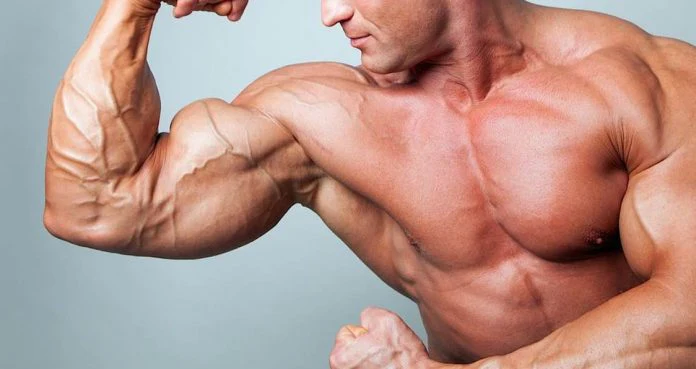Forearm Training That Actually Works: Build Thick, Powerful Forearms That Grip, Curl, and Dominate
Let’s get one thing straight: weak forearms hold you back — in every way that matters.
They limit your grip during deadlifts and rows. They ruin your bicep curls. And let’s be honest — when someone flexes their arm, it’s the forearms that add that real finishing touch. Big upper arms with pencil-thin forearms? That’s not balance. That’s unfinished work.
If you want a commanding grip, more control in your lifts, and thicker arms that look powerful from wrist to shoulder, it’s time to start training your forearms with real intention.
In this guide, we’ll break down the forearm anatomy, the best exercises, sample workouts, and pro-level strategies to take your forearm development from “afterthought” to “damn, what are you doing for those?”
Forearm Anatomy 101: What You’re Really Training
To train forearms properly, you have to understand their structure and function. Just like with biceps and triceps, different heads and regions require specific angles and techniques.
🔹 Wrist Flexors
- Located on the underside of your forearm (palm side)
- Responsible for wrist flexion, like curling your hand toward your body
- Heavily involved in wrist curls and gripping movements
🔹 Wrist Extensors
- Located on the top side of your forearm
- Control wrist stability and extension, important for grip control and elbow health
- Trained with reverse wrist curls and static holds
🔹 Brachioradialis
- A prominent forearm muscle that runs from your upper arm (humerus) to your wrist
- Works during neutral-grip (hammer-style) curls
- Adds thickness and front-arm density
💡 Pro Tip: Balanced forearms aren’t just about size. They’re about function, symmetry, and strength. To get there, you need a variety of angles, grips, and movement types.
Best Forearm Exercises for Size, Strength, and Grip Dominance
Let’s break down the core movements that will actually build your forearms — not just burn them out temporarily. These lifts are based on functional anatomy, proven tension principles, and decades of lifting experience.
🔹 1. Wrist Curls (Barbell or Dumbbell)
Primary Focus: Wrist Flexors
Why It Works: This classic is still one of the best for pumping up the underside of the forearm.
- Sit on a bench with forearms resting on your knees, palms up
- Let your wrists dip down, then curl the weight up using only your hands
- High reps, short rest = pump, blood flow, and density
Bodybuilder Tip: Use wrist curls at the end of a biceps day to finish the arm off with a deep burn.
🔹 2. Reverse Wrist Curls
Primary Focus: Wrist Extensors
Why It’s Essential: Most lifters ignore their extensors. That’s a mistake. You’ll never have balanced forearms without them.
- Same setup as wrist curls, but with palms down
- Go lighter and slower to avoid cheating the movement
- Focus on control and full range of motion
Lifter Strategy: Pair reverse curls with wrist curls for a 1:1 ratio. This keeps your wrists strong and healthy — especially if you’re doing lots of pressing or Olympic lifting.
🔹 3. Hammer Curls (Dumbbell or Rope)
Primary Focus: Brachioradialis + Biceps
Why It Builds Forearms: Hammer curls do more than grow biceps — they train the entire top of your forearm while building grip endurance.
- Use neutral grip (thumbs facing up)
- Keep reps strict — no swinging, no momentum
- Think: “squeeze and control”
Bodybuilder Edge: Use heavier hammer curls on arm day as a crossover between biceps and forearms. Add fat grips or towels to increase difficulty.
🔹 4. Fat Grip or Towel Holds
Primary Focus: Grip Strength + Forearm Engagement
Why It’s Gold: Thicker handles mean your forearms work harder on every single rep.
- Wrap a towel around the dumbbell handle, or use Fat Gripz
- Add to rows, curls, carries, or even pull-ups
- Builds crushing strength and total arm tension
Pro Technique: Use these tools on warm-up sets to pre-fatigue the forearms before your main lifts.
🔹 5. Farmer’s Carries
Primary Focus: Isometric Grip & Forearm Tension
Why It Works: If you’re not carrying weight, you’re leaving gains on the floor.
- Use dumbbells, kettlebells, or a trap bar
- Walk for time (30–60 sec) or distance (30–50 steps)
- Keep core braced and arms locked
Bodybuilder Strategy: Use as a finisher or on a conditioning day. Heavy weight builds strength, long carries build endurance.
Bonus Movements Worth Adding to Your Forearm Plan
🔸 Reverse Curls (EZ Bar or Dumbbell)
- Builds brachioradialis and upper forearm
- Also helps improve curl strength and elbow stability
- Use slow tempo and full range — 3×10–12 is plenty
🔸 Wrist Roller (DIY or Commercial)
- Intense time-under-tension exercise
- Attach a plate to a rope and roll it up using wrist movement
- Roll back down slowly — don’t let gravity cheat your gains
🔸 Plate Pinches
- Fantastic for thumb and finger grip strength
- Pinch two plates together (smooth sides out) and hold for time
- Great for lifters who want to improve deadlift grip or jiu-jitsu grips
Two Sample Forearm Workouts: Choose Your Focus
Whether you’re training forearms directly or adding them as a finisher, here are two proven protocols:
Pump-Focused Forearm Workout (Standalone or Add-On)
Goal: Max blood flow, time under tension, and muscular density
- Wrist Curls – 3 sets x 20 reps
- Reverse Wrist Curls – 3 sets x 15 reps
- Reverse Curls (EZ Bar) – 3 sets x 12 reps
- Wrist Roller – 2 full rounds (up and down)
Use this after your biceps day or as a dedicated arm session for max hypertrophy.
Grip-Focused Forearm Workout
Goal: Crushing grip, static strength, and carryover to compound lifts
- Farmer’s Carries – 3 x 40 steps
- Towel Dead Hangs (Pull-Up Bar) – 3 x 30 seconds
- Plate Pinches – 3 x Max hold time
Use this on back day or after deadlift sessions to boost carryover strength.
Programming Tips for Forearm Growth
Want real gains? Then you need a smart plan, not random sets.
✅ Frequency
- Train forearms 2–4 times per week
- They recover quickly, especially when using a mix of pump and strength protocols
✅ Pairing
- Add forearm training to biceps or back days
- For grip-focused days, pair with rows, carries, or deadlifts
✅ Volume Balance
- Use a blend of high-rep pump work and low-rep grip strength training
- Don’t just chase the burn — aim for quality tension and full-range reps
✅ Exercise Order
- Place grip work before heavy pulling sessions (if grip is a weak link)
- Place pump work at the end of upper body sessions for full burnout
Common Forearm Training Mistakes to Avoid
Even dedicated lifters mess this up. Avoid these errors to keep your progress moving.
Only doing wrist curls
You’re missing half the muscle. Train extensors and grip just as hard as flexors.
Rushing through reps
Forearms respond best to slow tempo and sustained tension. Speed kills growth here.
Ignoring grip endurance
Grip doesn’t just need to be strong — it needs to last. That means farmer’s carries, hangs, and holds.
Using light weights just to chase a burn
Yes, pump matters — but tension and progressive overload matter more. Challenge yourself.
Final Word: Thick Forearms Are Earned Through Volume, Variety, and Work Ethic
If your forearms are lagging, it’s not genetics. It’s usually undertraining, lack of variety, and forgetting the role they play in nearly every lift you do.
Want to fix it?
- Train them like you train any other muscle group — with intent, progression, and volume.
- Blend pump work, grip strength, and static holds.
- Keep the reps clean. Focus on form. Outwork your grip limitations.
Forearms grow when your effort outpaces your excuses. So next time you grab a bar, make sure you own it — from wrist to shoulder.
🔗 Related Articles:
- Complete Arm Training Guide
- Best Biceps Exercises Ranked
- Best Triceps Exercises for Size
- Why Your Arms Aren’t Growing
- Arm Day That Doesn’t Suck





